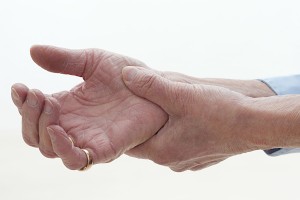 It is estimated that around 3 million people in the UK have osteoporosis.
It is estimated that around 3 million people in the UK have osteoporosis.
Osteoporosis is a condition in which the usually strong support struts that make up the inside of most bones becomes thinner, which can lead to bones becoming fragile and breaking easily, resulting in pain and disability.
In the UK, one in two women and one in five men over the age of 50 will fracture a bone, mainly due to poor bone health. But osteoporosis is often a silent condition, giving no pain or other symptoms to alert you to the fact until the worst happens and a bone breaks. As such, many people living with osteoporosis are unaware that they have fragile bones until this happens, sometimes with devastating consequences.
 Osteoporosis Awareness Campaign
Osteoporosis Awareness Campaign
In 2016, the Institute of Osteopathy teamed up with the National Osteoporosis Society to spread the word amongst patients and the public about prevention, detection and treatment of this condition. Osteopaths are in a prime position to screen patients for this silent condition, offering management advice and support as part of our holistic approach.
What causes Osteoporosis?
Those that smoke or drink in excess of the recommended daily alcohol intake are at greater risk, but gender, genetics, age, race and low body weight are all contributing factors. Find out more about risk factors here.
In the healthy skeleton, bone resorption and formation occurs in a balanced and organised fashion, but in the case of osteoporosis, this balance is lost. This might be because of:
- Insufficient mass and strength development in the first instance
- Excessive bone resorption
- Inadequate formation of new bone during remodelling
The disease may be classified as:
- Primary type 1 – resulting in women after the menopause due to reduced oestrogen production
- Primary type 2 – naturally occurring after the age of 75 in both women and men on a ratio of 2:1
- Secondary – to specific chronic medical conditions or as a result of certain medications such as corticosteroids. This does not tend to be age dependant, and effects men as often as women
Due to its larger surface area, cancellous bone is more subject to bone turnover and hence prone to the effects of inappropriate metabolism of bone. In osteoporosis, the supportive bony trabecular break, and are replaced by thinner, weaker bone making them fragile and more prone to fracture.
Because the wrist, hip and spine have more cancellous bone than cortical compared to other areas of the body, relying on trabecula for strength, these areas at greater risk of osteoporotic fractures.
Access indepth fact sheets provided by the National Osteoporosis Society here
How your osteopath can help
 There is a lot you can do to prevent the condition, and to reduce your chance of breaking a bone if you do get it. Osteopaths are often seen by the general public as experts in the field of bone health, and as such, they are well placed to screen patients for this condition and offer practical advice on risk factors, prevention and treatment. To find your local osteopath, click here.
There is a lot you can do to prevent the condition, and to reduce your chance of breaking a bone if you do get it. Osteopaths are often seen by the general public as experts in the field of bone health, and as such, they are well placed to screen patients for this condition and offer practical advice on risk factors, prevention and treatment. To find your local osteopath, click here.
Screening:
Your local osteopath can screen you for the condition using a special online screening tool called the FRAX questionnaire.
The FRAX tool has been developed by World Health Organisation (WHO) to predict the 10-year probability of hip or other major osteoporotic fracture in patients based on determinants generally accepted to be the key risk factors.
Prevention Advice:
Once a person who is at risk of developing osteoporosis or sustaining a fracture as a result has been identified, there is a lot they can do to reduce the chance of breaking a bone. Patients who are assessed as being at risk of osteoporosis will be given dietary, exercise and lifestyle advice to help manage risk factors to reduce the impact of the condition on their lifestyle.
Those that are found to be at moderate to high risk will be advised to consult their GP.